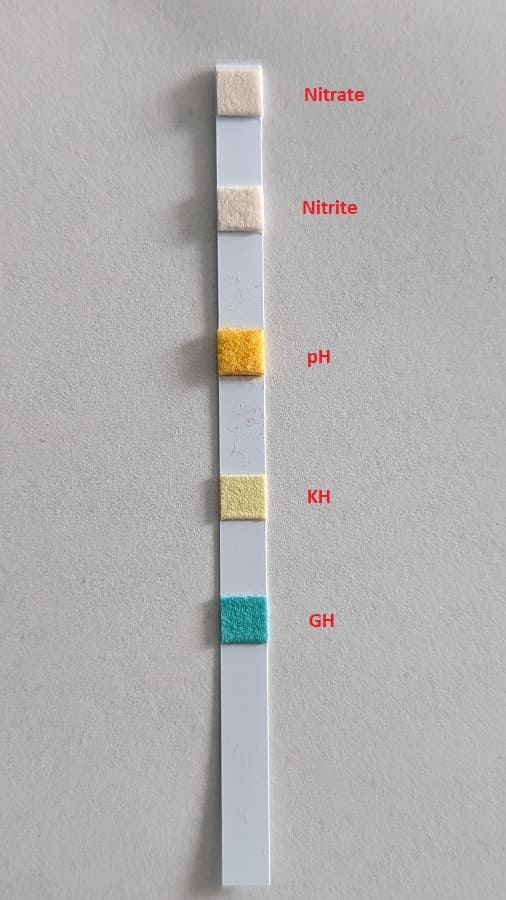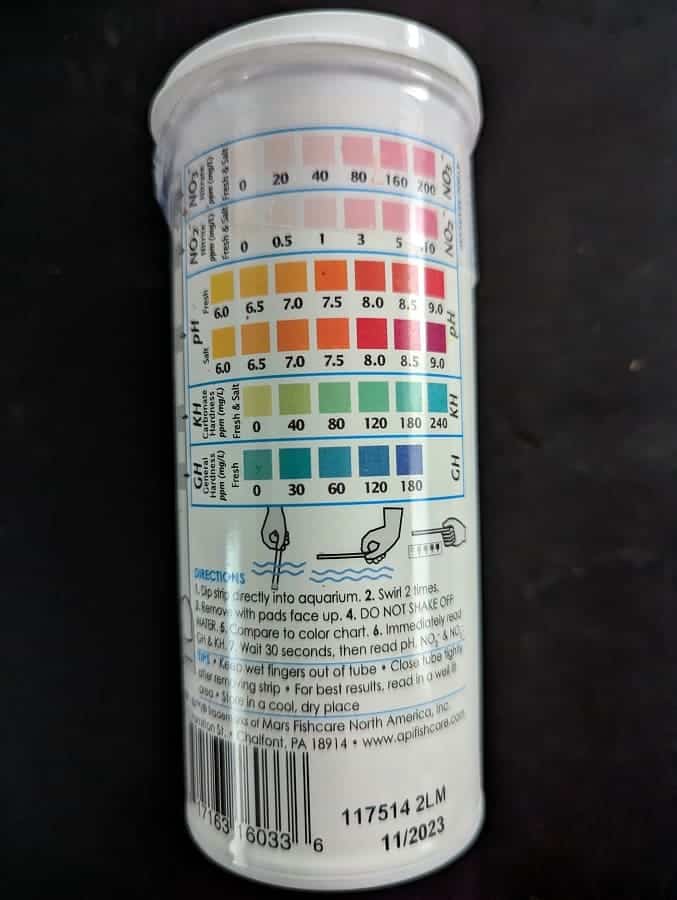With the API 5 in 1 Test Strips, you will be able to measure the nitrate, nitrite, pH, KH and GH levels in your tank water. To see how you can properly read one of these sticks, you can take a look at this tutorial from Aquarium Blueprints.
1. For the first step, we recommend that you properly hold one of the strips.
Using your thumb and index fingers, pick up a strip from the container from the end that doesn’t have any pads on the edge.

2. From that position, the pads are organized, from top to bottom, in the following order:
- Nitrate (NO3)
- Nitrite (NO2)
- pH
- KH (Carbonate Hardness)
- GH (General Hardness)
You can check out an image if you need some visual help in identifying the correct testing pad positions:

3. Once you are ready, you need to dip the test strip into your tank water, swirl it around two times and then remove it with the pads facing upwards. Make sure you don’t shake off any excess water on the strip.
For more precise directions when it comes to testing your tank water with this product, you can take a look at our step-by-step instructions with this link.
4. Afterwards, place the test strip next to the color chart. You should make sure that you are in a well-lit room as it can be hard identifying the different shades of the same color.
With our API 5 in 1 Test Strips, the chart is located on the backside of our container.

5. The KH and GH levels can be read immediately after you remove the strip from the aquarium.
6. For the Nitrate, Nitrite and pH levels, you need to wait at least 30 seconds after you removed the strip from your tank water in order for the pads to settle down in order to get an accurate reading.
7. On the color chart, you may notice that there are two rows. The top one is for freshwater while the bottom one is for saltwater.
Make sure that you are using the correct row so that you can get an accurate pH level measurement for your freshwater or saltwater tank.
8. Once you are done comparing the test results with the color charts, you can throw away the used testing strip in the garbage as you can’t use it again to test your water parameters.
Do not put the strip back into the container as it will most likely contaminate the other testing strips.
